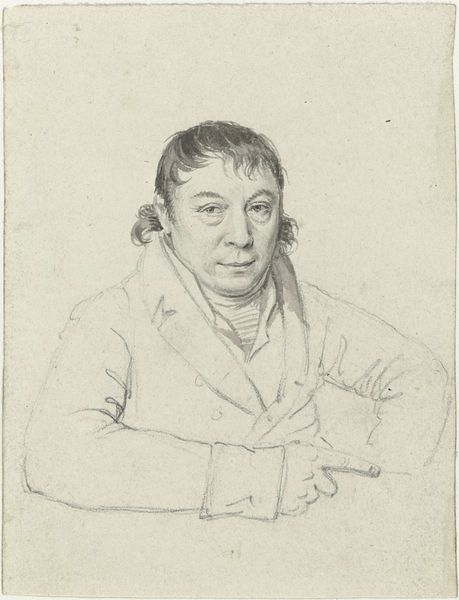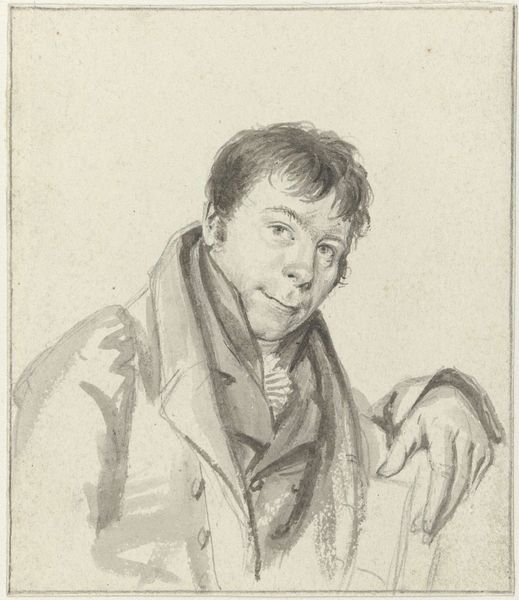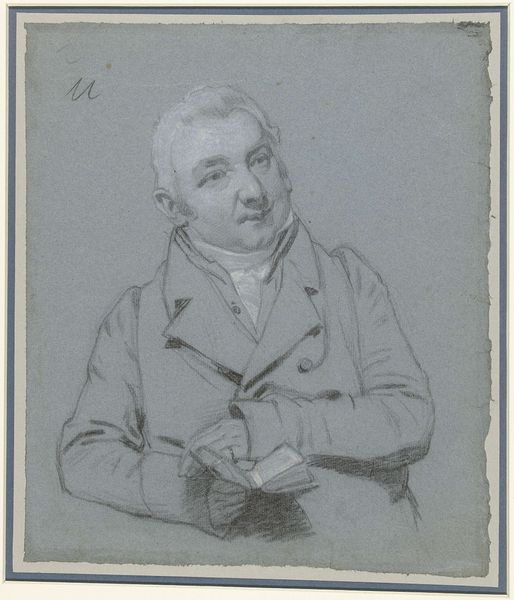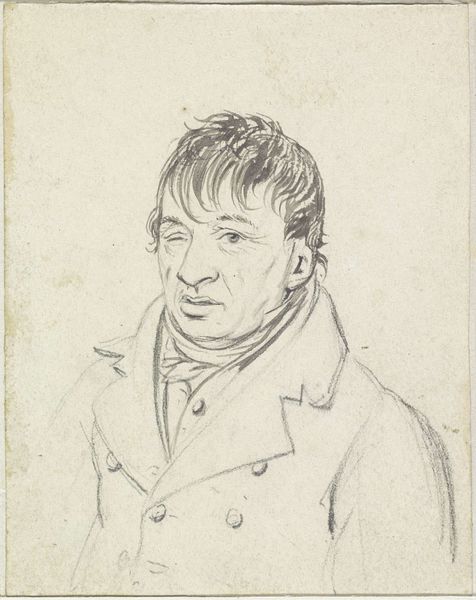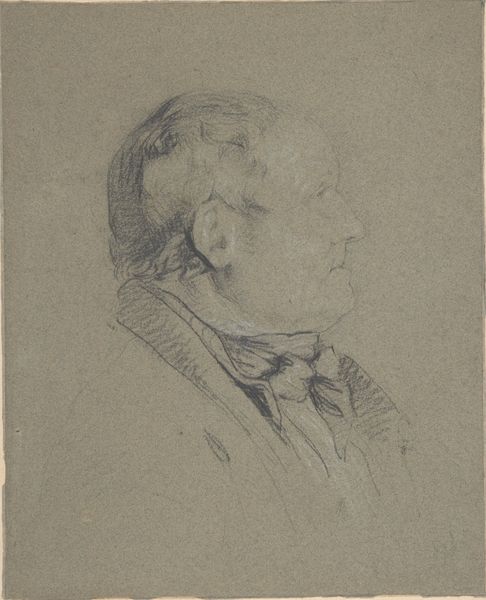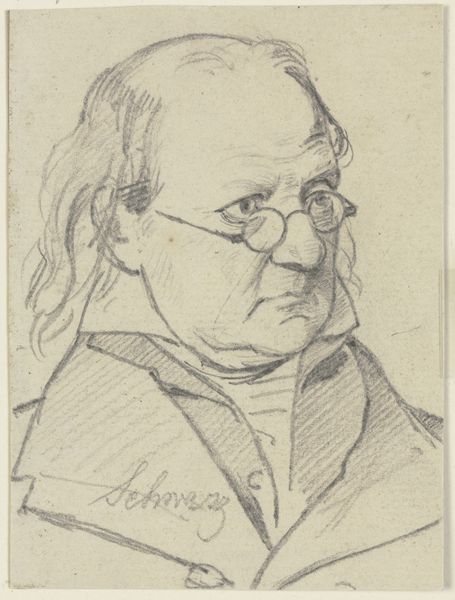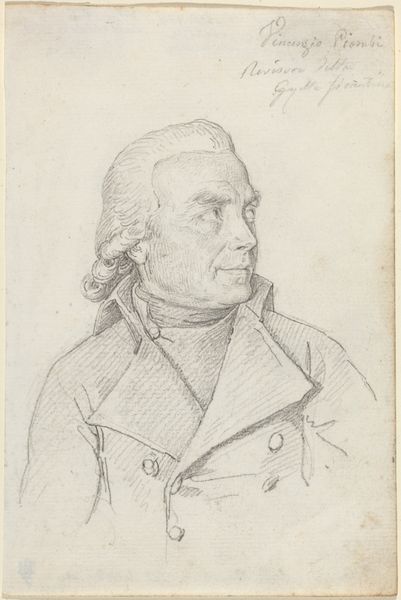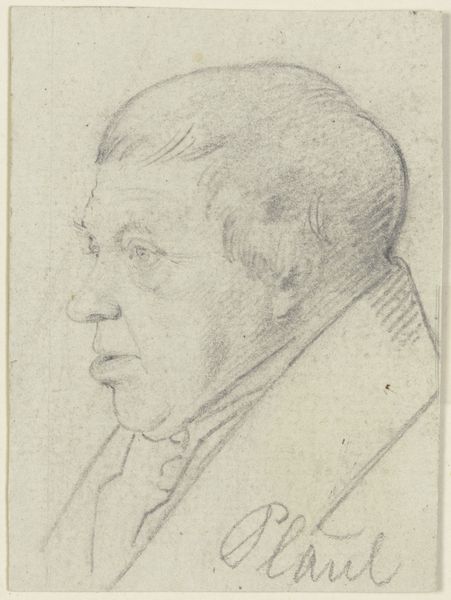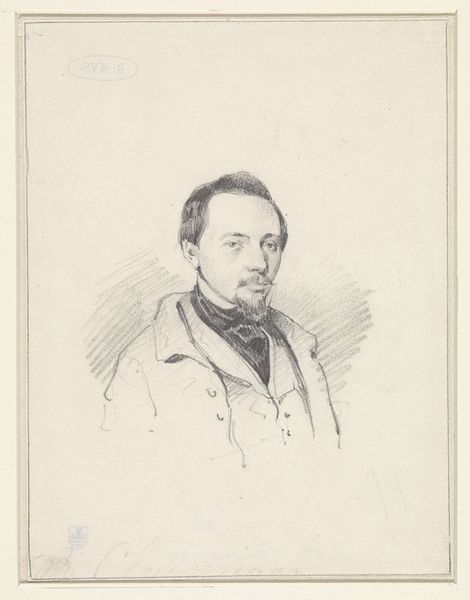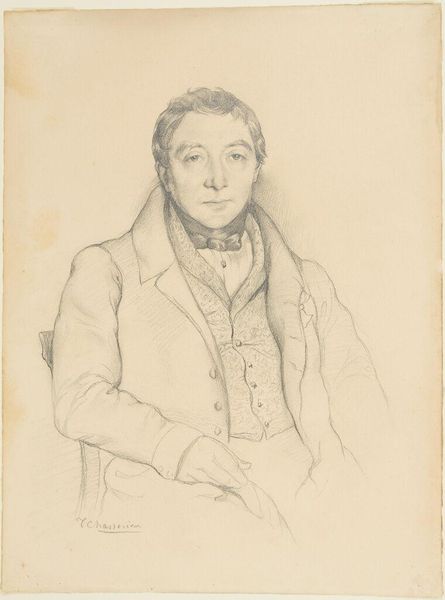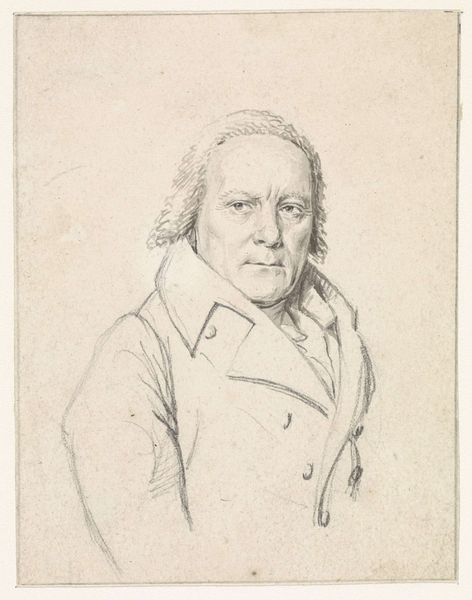
drawing, pencil
#
portrait
#
drawing
#
neoclassicism
#
caricature
#
pencil drawing
#
pencil
#
portrait drawing
#
realism
Dimensions: height 107 mm, width 82 mm
Copyright: Rijks Museum: Open Domain
Editor: This is a pencil drawing, "Portret van Chr\u00e9tien Dubois", made sometime between 1790 and 1829, now at the Rijksmuseum. There's something very direct and unidealized about his gaze; almost confrontational despite the soft lines of the drawing. What strikes you about this portrait? Curator: What I see is a negotiation of power dynamics. While the style nods to Neoclassical portraiture, often used to depict the elite, there's a deliberate rawness here. Think about who was being portrayed, and by whom, at this time. Was Dubois part of the aristocracy? Or was he part of the burgeoning middle class seeking representation? Editor: That's a great point! I hadn't considered the social implications of portraiture in that era. The frankness of the portrayal, perhaps, becomes a statement. Do you see any commentary on social issues? Curator: Absolutely! Consider the period—a time of revolution and shifting social structures. Is the artist perhaps subverting the traditional, idealized portrayals of power, by presenting a more realistic, almost vulnerable, depiction of the sitter? This act of ‘realism’ becomes a powerful commentary. How do we view "ordinary" people in art history, and what power do they have to participate in that narrative? Editor: That makes so much sense. I initially focused on the aesthetic qualities, but understanding the historical context adds so many layers of meaning. Curator: Exactly! This drawing then transcends a mere depiction; it becomes a dialogue, questioning established norms and challenging who gets to be seen, and how. Editor: Thanks for that analysis. Now, seeing this work, I won't just see lines on paper; I'll see a statement! Curator: And that's the power of engaging with art, isn't it?
Comments
No comments
Be the first to comment and join the conversation on the ultimate creative platform.
